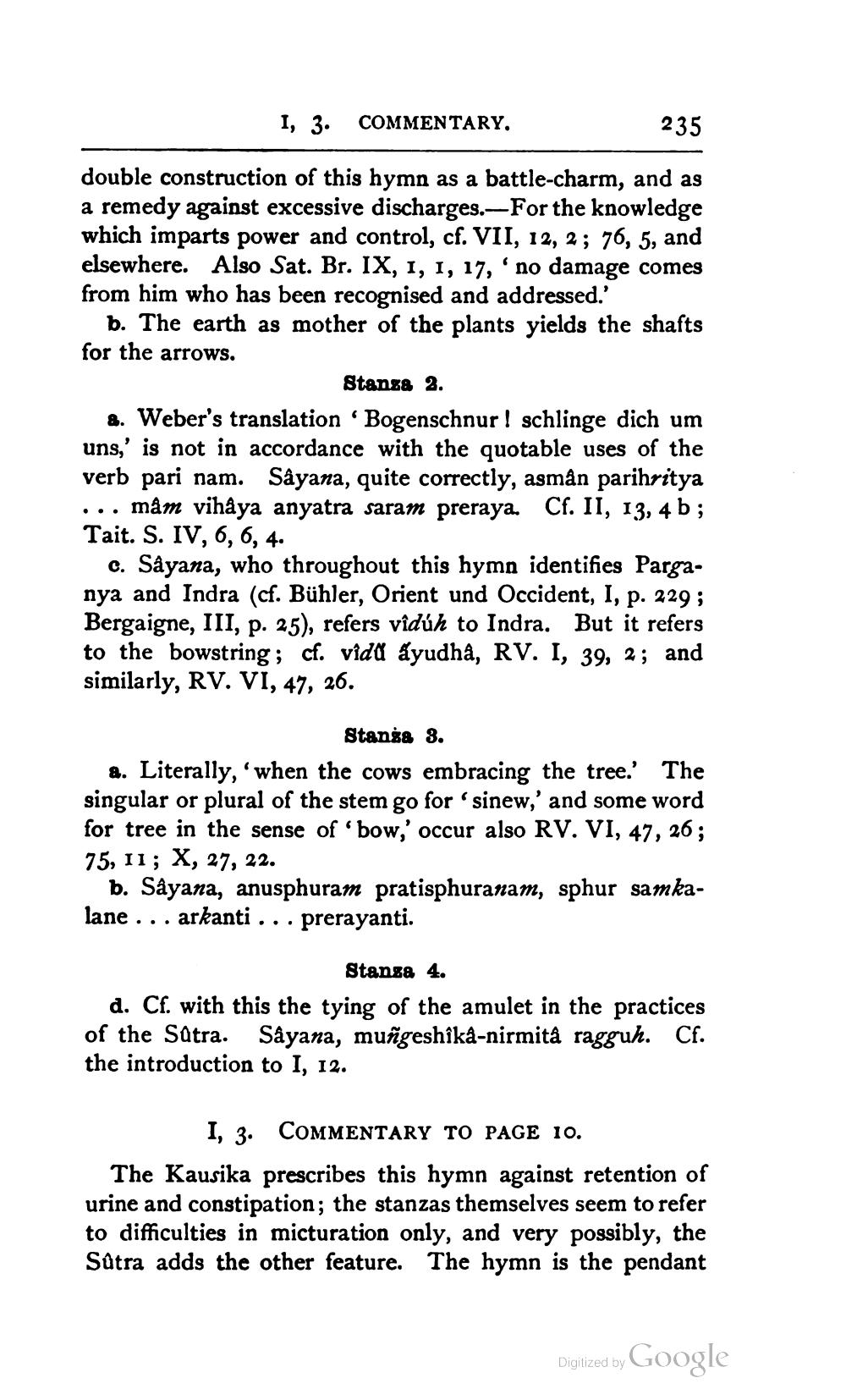________________
1, 3. COMMENTARY.
235
double construction of this hymn as a battle-charm, and as a remedy against excessive discharges.-- For the knowledge which imparts power and control, cf. VII, 12, 2; 76, 5, and elsewhere. Also Sat. Br. IX, 1, 1, 17, 'no damage comes from him who has been recognised and addressed.'
b. The earth as mother of the plants yields the shafts for the arrows.
Stansa 2. &. Weber's translation ‘Bogenschnur ! schlinge dich um uns,' is not in accordance with the quotable uses of the verb pari nam. Såyana, quite correctly, asmân parihritya ... mám vihåya anyatra saram preraya. Cf. II, 13, 4 b; Tait. S. IV, 6, 6, 4.
c. Sâyana, who throughout this hymn identifies Parganya and Indra (cf. Bühler, Orient und Occident, I, p. 229; Bergaigne, III, p. 25), refers vîdúh to Indra. But it refers to the bowstring; cf. vidu ayudha, RV. I, 39, 2; and similarly, RV. VI, 47, 26.
Stanga 3. a. Literally, 'when the cows embracing the tree.' The singular or plural of the stem go for sinew,' and some word for tree in the sense of bow,' occur also RV. VI, 47, 26; 75, 11; X, 27, 22.
b. Såyana, anusphuram pratisphuranam, sphur samkalane ... arkanti ... prerayanti.
Stansa 4. d. Cf. with this the tying of the amulet in the practices of the Satra. Sayana, muñgeshika-nirmità ragguh. Cf. the introduction to I, 12.
I, 3. COMMENTARY TO PAGE 10. The Kausika prescribes this hymn against retention of urine and constipation; the stanzas themselves seem to refer to difficulties in micturation only, and very possibly, the Sätra adds the other feature. The hymn is the pendant
Digized by Google




